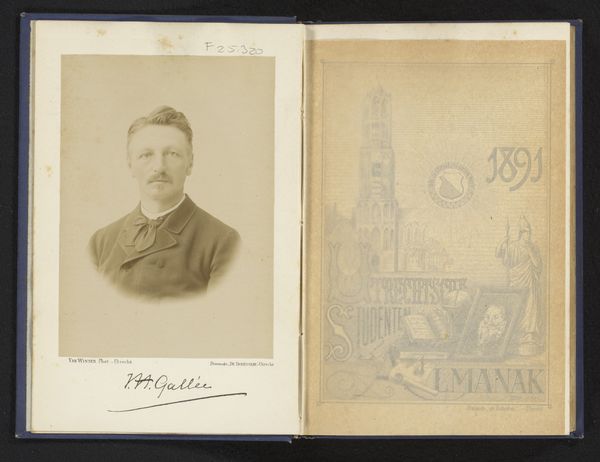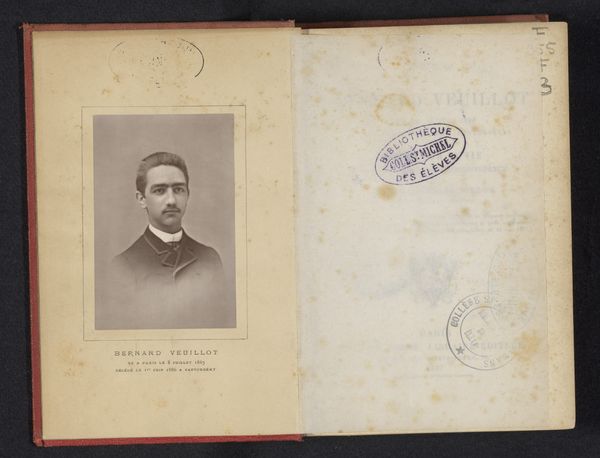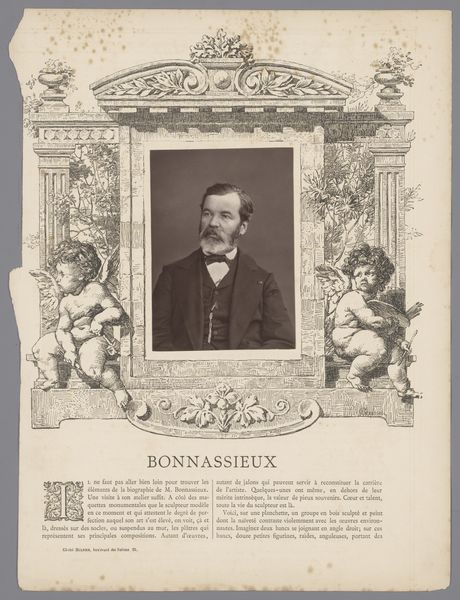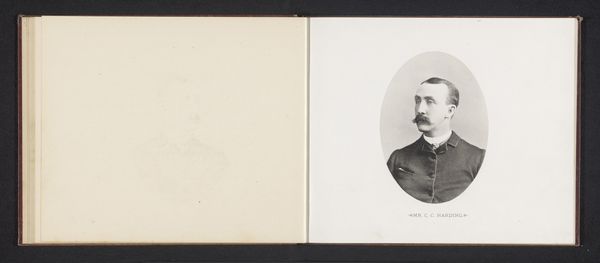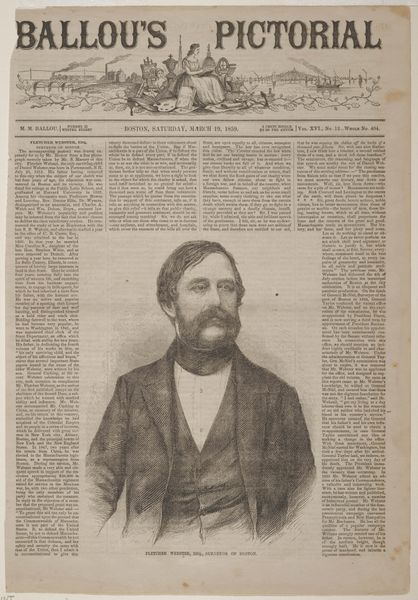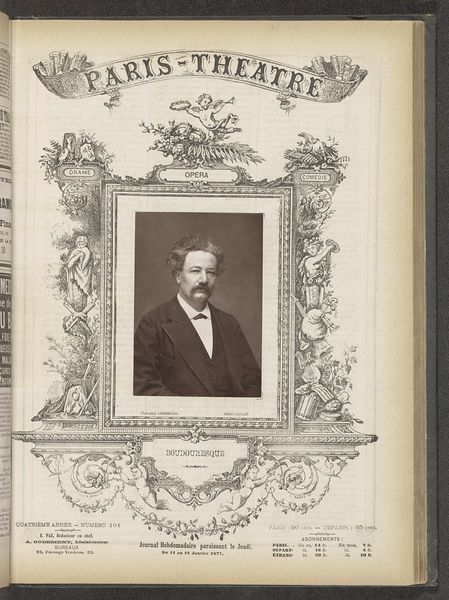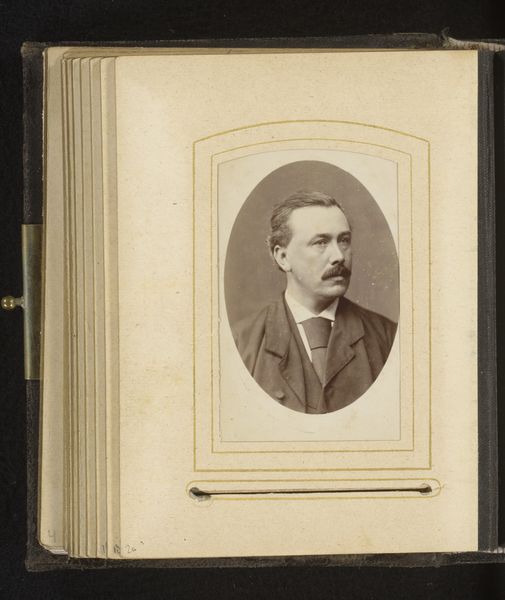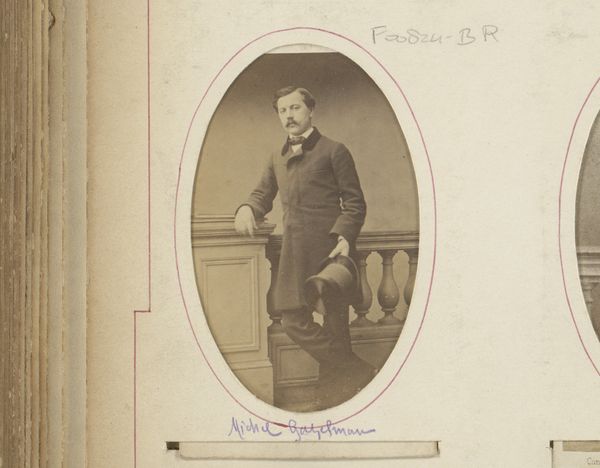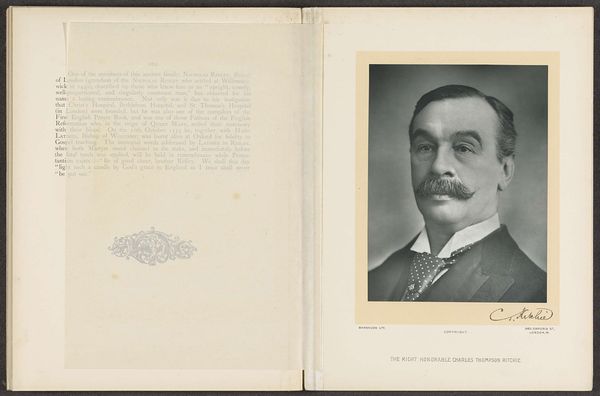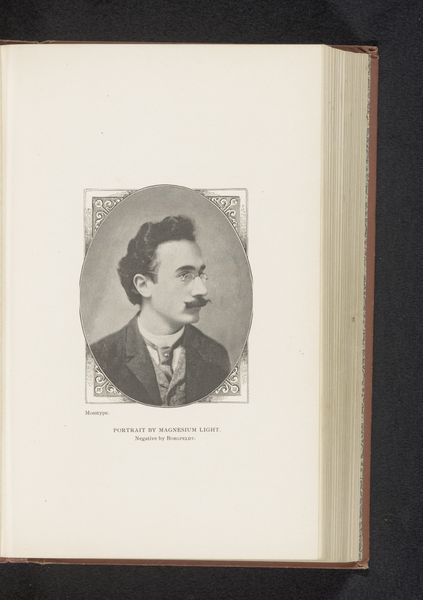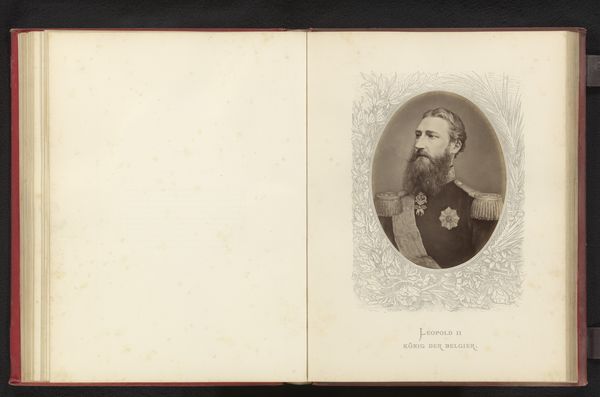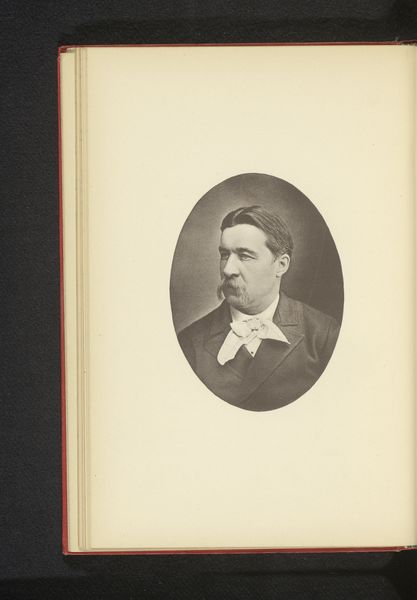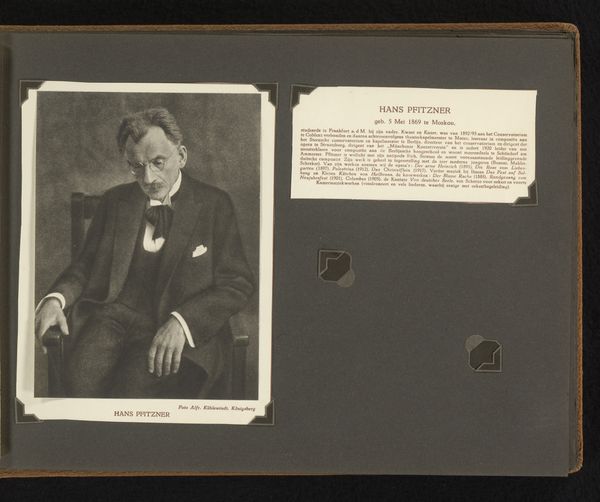
William E. Quinby, Detroit Free Press, from the American Editors series (N35) for Allen & Ginter Cigarettes 1887
0:00
0:00
drawing, print
#
portrait
#
drawing
#
magazine cover layout
#
pictorialism
# print
#
men
#
cityscape
#
genre-painting
#
history-painting
#
watercolor
Dimensions: Sheet: 2 7/8 x 3 1/4 in. (7.3 x 8.3 cm)
Copyright: Public Domain
Curator: This lithograph, dating to 1887, features William E. Quinby of the Detroit Free Press, and it was produced by Allen & Ginter as part of their "American Editors" series for cigarette cards. Editor: What strikes me is the contrast: Quinby’s severe portrait juxtaposed against the romantic, almost dreamlike cityscape behind him. It's a potent visual dichotomy. Curator: Precisely. Consider the materials: cardboard, ink, mass production techniques. These cards were essentially advertising ephemera, yet they preserved and circulated images of prominent figures and landmarks. It speaks to the democratization of portraiture in the late 19th century. Editor: Absolutely. And the cityscape itself, "The Depot at Night - Detroit," is filled with symbols. The lit clock tower could represent progress and industry, while the dark sky hints at the mysteries and anxieties of a rapidly modernizing America. The carriages, the crowd—they allude to journeys and collective experience. Curator: These cards, while seemingly insignificant, operated within a vast network of manufacturing, distribution, and consumption. They provided income for artists and factory workers, shaped public perception of success and celebrity, and even fostered a sense of national identity. Editor: There’s also something about the idealized portrait itself. He’s framed almost heroically, yet set against the everyday hustle of urban life. He embodies a kind of civic virtue linked to his role in journalism. Curator: Right, this connects to larger debates about the role of media and its impact on society at the time. Was it reporting with objectivity, or influencing it through the choices and representations it highlighted, as visible here? Editor: Indeed, the card operates almost like a miniature propaganda piece. A concise image merging commercial promotion with the aura of established figures and evocative places. Curator: Seeing how seemingly disposable objects held so many embedded levels is exactly what makes their study so important. Editor: An unexpected complexity from something so small. Now I will keep my eye on these sort of advertising imagery.
Comments
No comments
Be the first to comment and join the conversation on the ultimate creative platform.

